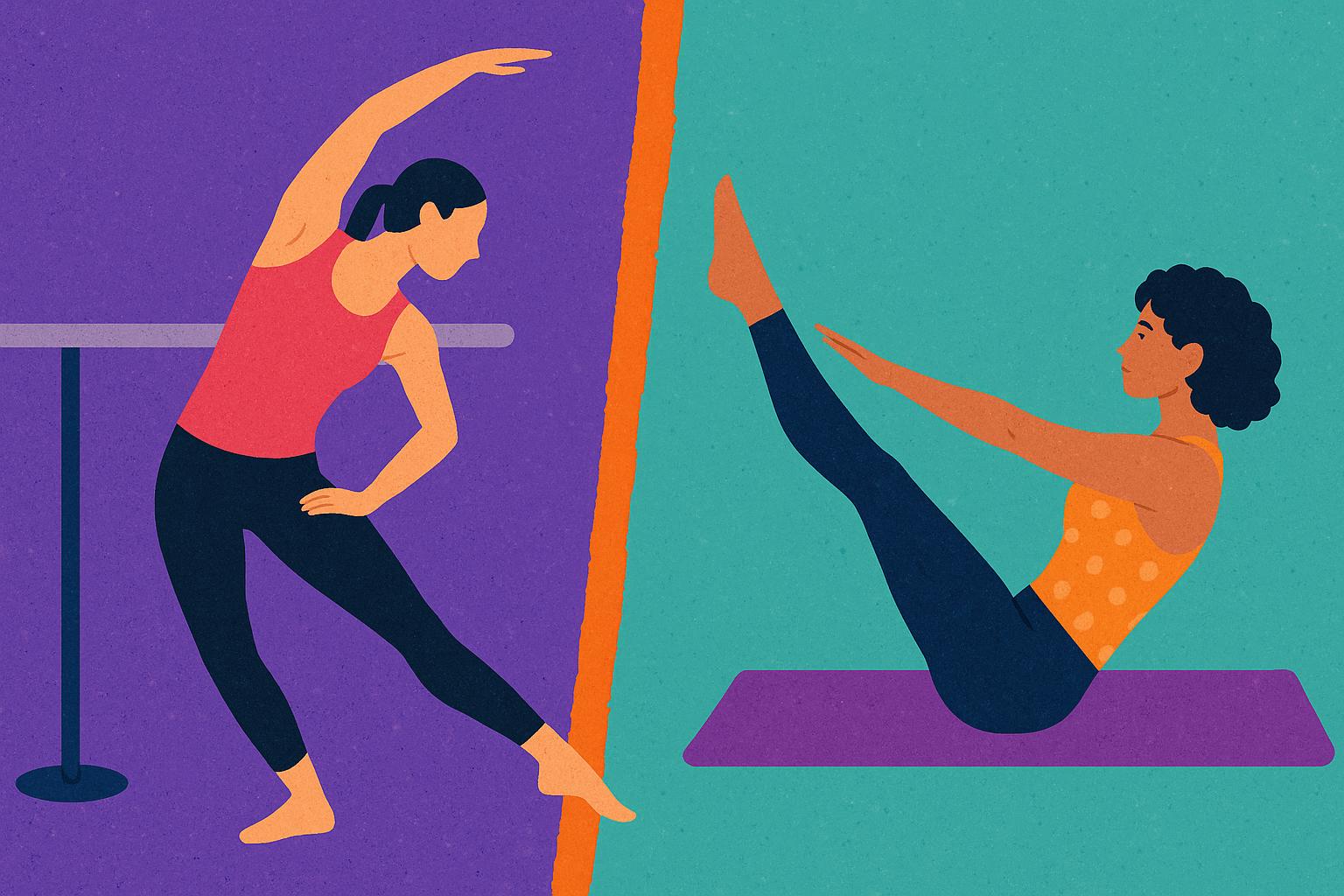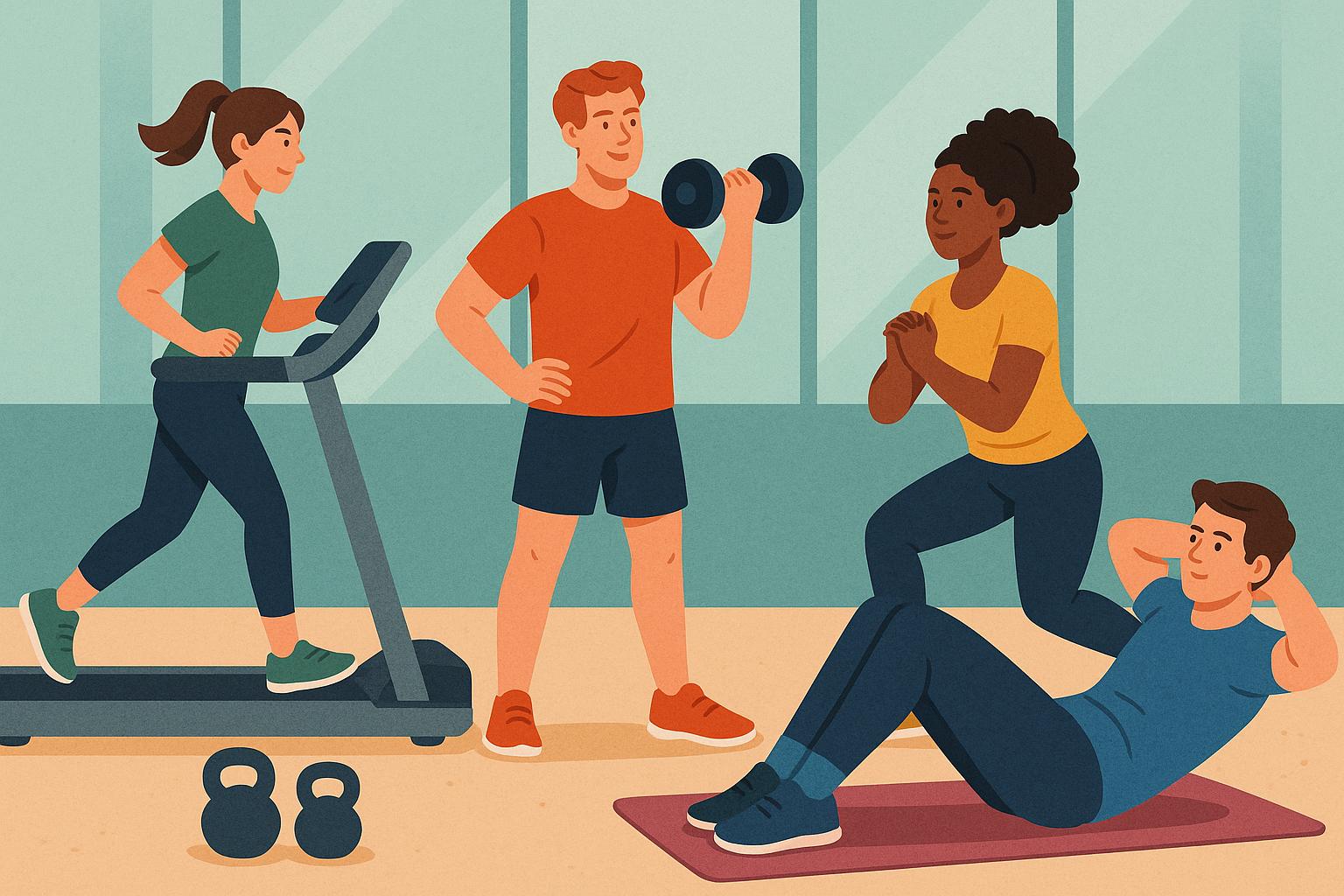CrossFit vs HIIT: Which Fitness Program Delivers Better Results?
When it comes to transforming your body, burning fat, building muscle, and improving overall fitness, two names dominate the conversation: CrossFit and High-Intensity Interval Training (HIIT). Both of these fitness programs have skyrocketed in popularity over the years, but they stand as distinct approaches with unique philosophies. So, how do they measure up? Which one truly delivers better results? In this article, we’ll dive deep into both workout styles, exploring their benefits, challenges, and what you can expect from each program.
The Roots of CrossFit: A Lifestyle, Not Just a Workout
To understand CrossFit, you have to recognize that it’s more than just a workout; it’s a fitness revolution that promotes an all-encompassing lifestyle. Founded in 2000 by Greg Glassman and Lauren Jenai, CrossFit is a branded fitness regimen that mixes a variety of exercises drawn from weightlifting, gymnastics, and cardio. Its goal is to foster general physical preparedness (GPP), meaning it’s designed to help people become capable in all domains of fitness.
CrossFit incorporates functional movements that are practical for daily life. From squats and deadlifts to box jumps and rope climbs, these exercises aim to improve strength, flexibility, endurance, and stamina. The unique aspect of CrossFit is its community-oriented approach. Workouts are typically done in a group setting, creating an atmosphere that encourages camaraderie, support, and motivation, often referred to as the “CrossFit community.”
One of the most notable elements of CrossFit is the inclusion of “WODs” (Workouts of the Day). These WODs often involve high-intensity movements performed for time or reps, and they can vary widely from day to day. The constantly changing nature of the workouts ensures that the body is constantly challenged, preventing plateaus and keeping the workout exciting.
HIIT: The Science-Backed Fat-Burning Machine
High-Intensity Interval Training, or HIIT, is a training method designed to push your body to its maximum capacity in short bursts of intense activity followed by brief rest periods. The goal is to elevate your heart rate to a level that triggers fat burning and builds cardiovascular endurance in a fraction of the time that traditional cardio might take.
The concept of HIIT isn’t new, but it’s gained massive traction in recent years due to its efficiency. Whether you’re running sprints, cycling on a stationary bike, or doing bodyweight exercises like burpees or jump squats, HIIT focuses on maximizing effort within a set period, typically ranging from 20 seconds to 1 minute of intense work, followed by 10 to 30 seconds of rest. This cycle is repeated multiple times, and the intensity ensures your body continues to burn calories even after the workout is done, a phenomenon known as “afterburn” or excess post-exercise oxygen consumption (EPOC).
HIIT workouts can be easily tailored to fit any fitness level. Whether you’re a beginner or an elite athlete, you can modify the intensity of the exercises to match your abilities. This adaptability, combined with the efficiency of the workout, makes HIIT a highly popular choice for people with tight schedules who want to maximize results in minimal time.
Comparing CrossFit and HIIT: Intensity and Variety
When comparing CrossFit and HIIT, both are high-intensity workouts designed to challenge your cardiovascular system and promote fat loss, but they do so in very different ways.
CrossFit, with its focus on varied movements, challenges your body in different ways every day. You may perform Olympic weightlifting one day and jump on a rowing machine the next. The variety of movements ensures that no muscle group is left behind, which contributes to overall muscle building, improved endurance, and enhanced functional strength. CrossFit places a strong emphasis on strength training, and for those looking to build muscle while also burning fat, CrossFit offers a balanced approach to strength and conditioning.
In contrast, HIIT is more focused on maximizing the heart rate during intense intervals, which makes it particularly effective for burning fat. While HIIT may include bodyweight exercises or short sprints, it generally doesn’t involve lifting heavy weights or incorporating Olympic lifting techniques as CrossFit does. Instead, the emphasis is on maximizing effort in short bursts, with less focus on developing strength and more on improving cardiovascular endurance.
While both programs are intense, the key difference lies in their scope. CrossFit is designed to be a more holistic approach to fitness, targeting strength, power, agility, flexibility, and cardiovascular health. HIIT, on the other hand, is often used as a fat-burning workout focused on cardiovascular improvements.
Which One Burns More Fat?
When it comes to fat loss, both CrossFit and HIIT have their merits. HIIT is often hailed as one of the most effective fat-burning workouts due to its ability to keep your heart rate elevated for an extended period. The combination of intense effort and rest intervals stimulates the body’s afterburn effect, which helps to continue burning calories long after the workout is over.
CrossFit also excels in fat loss, but its benefits are more compounded because it combines elements of strength training and aerobic conditioning. For example, performing a WOD that involves both heavy lifting and intense cardio can elevate your metabolic rate significantly, allowing you to burn fat while building muscle simultaneously. Additionally, CrossFit’s emphasis on full-body, compound movements means you are more likely to recruit a larger number of muscle fibers, which results in a higher energy expenditure during the workout.
If you’re specifically targeting fat loss, HIIT may be more efficient due to its high calorie burn in a shorter amount of time. However, if you’re interested in developing muscle mass while simultaneously burning fat, CrossFit’s combination of strength training and high-intensity conditioning offers a more well-rounded solution.
Building Strength and Endurance: Which Reigns Supreme?
When it comes to building strength, CrossFit undoubtedly has the upper hand. As mentioned earlier, CrossFit incorporates functional movements that include heavy lifts, gymnastics, and explosive cardio. Olympic weightlifting, deadlifts, squats, and presses are staples in the CrossFit regimen, which contribute to muscle development and strength improvement. Over time, participants can see noticeable increases in muscle mass and overall strength due to the frequent and consistent lifting routines in CrossFit.
HIIT can build muscle to some extent, especially with bodyweight exercises like squats, push-ups, and lunges, but it’s not structured to focus on progressive overload, which is a key principle in building strength. As a result, while HIIT can improve muscular endurance and tone muscles, it is less likely to significantly increase raw strength compared to CrossFit.
On the other hand, HIIT excels in improving cardiovascular endurance. The repeated bursts of intense effort followed by brief rest periods push your cardiovascular system to its limits, resulting in improved stamina, faster recovery, and better heart health. While CrossFit does involve cardiovascular conditioning, it doesn’t target endurance in the same focused way that HIIT does. If endurance is your primary goal, HIIT may be the better choice.
The Community Factor: Motivation in a Group Setting
One of the most appealing aspects of CrossFit is its sense of community. CrossFit gyms, or “boxes,” are known for fostering an environment of camaraderie and mutual support. Members cheer each other on, and many CrossFitters find that the group atmosphere motivates them to push through their limits. The sense of accountability that comes with attending classes regularly, as well as the support system of fellow athletes, can be a huge motivator for those who thrive in a social setting.
In contrast, HIIT is often done individually or in small groups. While some HIIT classes offer a group format, it’s generally not as community-driven as CrossFit. The lack of a large group dynamic can be appealing for people who prefer a more independent or personal approach to their workouts. However, this can also be a disadvantage for those who thrive on the social aspect of exercise and need the energy of others to stay motivated.
Time Commitment: Which Program Fits Your Schedule?
When it comes to time commitment, HIIT is generally the winner. HIIT workouts can often be completed in 20 to 30 minutes, which makes them ideal for busy individuals with limited time to dedicate to exercise. Since HIIT involves intense bursts of activity followed by short rest periods, you can achieve maximum benefits in a fraction of the time it would take with a traditional workout.
CrossFit workouts, while effective, tend to be longer due to their complexity and the inclusion of different training elements such as strength training, skill work, and conditioning. A typical CrossFit session can last anywhere from 45 minutes to an hour, depending on the specific WOD and how much rest is needed between rounds.
For those with tight schedules, HIIT’s shorter duration may be more practical, but if you’re willing to commit more time and enjoy the variety of movements and strength-building aspects, CrossFit’s longer sessions might offer greater long-term benefits.
The Verdict: Which One Delivers the Best Results?
Both CrossFit and HIIT offer impressive results, but the choice ultimately depends on your specific fitness goals. If you’re looking for a well-rounded program that builds strength, improves endurance, and enhances overall fitness, CrossFit is your best bet. The variety, community atmosphere, and strength-building elements make it an excellent choice for those who want to become more physically capable in all aspects of fitness.
If fat loss, time efficiency, and cardiovascular conditioning are your main priorities, HIIT may be the better option. It’s a great choice for people who need to fit a powerful workout into a short amount of time and want to see results quickly.
Ultimately, the best program for you is the one that aligns with your personal goals, lifestyle, and preferences. Whether you choose CrossFit, HIIT, or a combination of both, the key to success is consistency, dedication, and a passion for pushing your limits.




